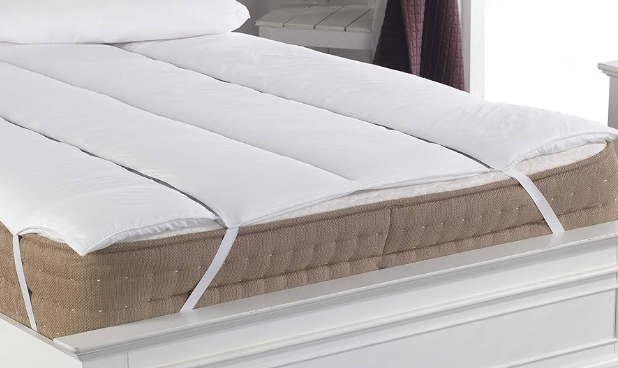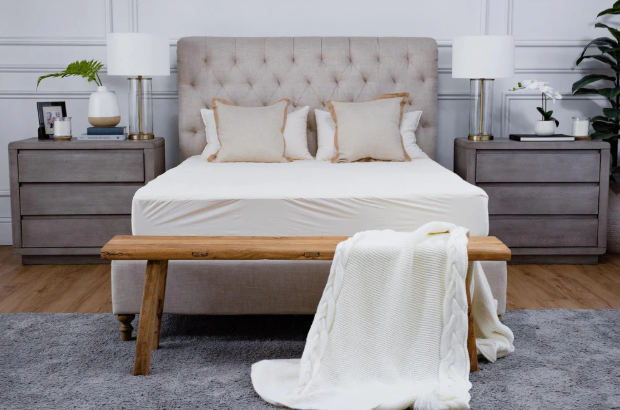A mattress topper soft enough to transform your sleep experience can be a game-changer for those seeking a plush, cozy bed without replacing their existing mattress.
Whether your current mattress feels too firm, lacks cushioning, or simply doesn’t cradle your body the way you’d like, a soft mattress topper offers an affordable, practical solution.
This comprehensive guide explores the benefits, materials, technical considerations, and actionable steps for selecting the perfect soft mattress topper to elevate your sleep quality.
Backed by the latest research and expert insights, this article will help you make an informed decision while optimizing for comfort, durability, and value.
Why Choose a Soft Mattress Topper?
A mattress topper soft in texture provides a cushioned layer that enhances the comfort of your mattress. Unlike firmer toppers designed for rigid support, soft toppers prioritize a plush, cloud-like feel, ideal for side sleepers, individuals with pressure point sensitivity, or those who simply prefer a luxurious sleep surface.

Soft mattress toppers also extend the life of an aging mattress, masking imperfections like sagging or lumps. These mattress toppers soft enough are a cost-effective alternative to purchasing a new mattress, with high-quality options ranging from $50 to $300, depending on materials and thickness.
Additionally, toppers are easier to replace or clean, making them a practical choice for maintaining a hygienic sleep environment.
Types of Soft Mattress Toppers: Materials and Technical Breakdown
The material of a mattress topper soft in feel significantly impacts its comfort, durability, and performance. Below, we dive into the most popular materials, their technical properties, and their pros and cons, based on recent industry data and consumer reviews from 2024.
1. Memory Foam
Memory foam toppers are renowned for their contouring properties, molding to your body’s shape to relieve pressure points. These toppers typically have a density of 2.5 to 5 pounds per cubic foot, with lower densities offering a softer feel.
Gel-infused or open-cell memory foam, introduced in recent models, enhances breathability to prevent overheating—a common concern with traditional foam.
Pros:
- Exceptional pressure relief, ideal for side sleepers.
- Minimizes motion transfer, great for couples.
- Durable, with a lifespan of 3–7 years.
Cons:
- May retain heat without cooling technology.
- Initial off-gassing odor in some models.
Technical Tip: Look for CertiPUR-US certified foam to ensure low VOC emissions and eco-friendly production.
2. Latex
Latex toppers, made from natural or synthetic rubber, offer a soft yet responsive feel. Natural latex, sourced from rubber trees, is hypoallergenic and resistant to dust mites, making it ideal for allergy sufferers. Latex toppers with a softness rating of 3–4 on a 10-point firmness scale provide a buoyant, cushioned feel without the “sinking” sensation of memory foam.
Pros:
- Naturally cooling and breathable.
- Eco-friendly if sourced sustainably.
- Long lifespan (5–10 years).
Cons:
- Higher cost, often $200+ for natural latex.
- Heavier than other materials.
Technical Tip: Check for Talalay or Dunlop latex processing—Talalay is softer and airier, while Dunlop is denser.
3. Feather or Down
Feather and down toppers, filled with duck or goose feathers, provide a luxurious, hotel-like softness. These toppers typically have a fill power of 550–750, with higher fill power indicating greater loft and softness.
Down alternative toppers, made from synthetic fibers, are gaining popularity for their cruelty-free and hypoallergenic properties.
Pros:
- Ultra-soft, plush feel.
- Lightweight and breathable.
- Affordable, starting at $50.
Cons:
- Less supportive for heavier individuals.
- May require frequent fluffing to maintain loft.
Technical Tip: Ensure the topper has a baffled or quilted design to prevent filling from shifting.
4. Polyfoam
Polyfoam toppers are a budget-friendly option, often softer than memory foam but less durable. With a density of 1.5–2.5 pounds per cubic foot, they provide a cushioned feel but may compress over time.
Pros:
- Affordable, often under $100.
- Lightweight and easy to move.
Cons:
- Shorter lifespan (1–3 years).
- Less contouring than memory foam or latex.
Technical Tip: Opt for high-resilience polyfoam for better durability and comfort.
Key Features to Consider When Choosing a Soft Mattress Topper
Selecting the right mattress topper soft enough for your needs involves evaluating several technical factors. Here’s what to prioritize, based on the latest bedding industry standards:
- Thickness: Soft toppers range from 1 to 4 inches thick. Thicker toppers (3–4 inches) provide more cushioning and are better for masking mattress imperfections, while thinner options (1–2 inches) add subtle softness without altering the mattress’s core support.
- Firmness Level: Even soft toppers vary in firmness. We recommend a firmness level of 2–4 (on a 1–10 scale) for optimal plushness without compromising spinal alignment.
- Cooling Technology: Heat retention is a concern for soft foam toppers. Look for gel infusions, perforated designs, or breathable covers made of bamboo or Tencel to regulate temperature.
- Certifications: Ensure the topper meets safety and environmental standards. CertiPUR-US (for foam) and OEKO-TEX (for textiles) certifications guarantee low chemical emissions and sustainable production.
- Cover Material: A removable, washable cover made of cotton, bamboo, or a cotton-poly blend enhances hygiene and comfort. Some toppers include cooling or moisture-wicking fabrics for added luxury.
- Trial Period and Warranty: Many brands offer 30–100-night trial periods and warranties of 1–10 years. A 2024 review by Wirecutter emphasizes the importance of trial periods to test comfort at home.
Steps to Choose and Maintain Your Soft Mattress Topper
Follow these steps to select and care for your mattress topper soft to ensure long-term comfort and durability:
- Assess Your Needs: Determine your sleep position and comfort preferences. Side sleepers benefit most from soft toppers, while back or stomach sleepers may need a slightly firmer option to maintain spinal alignment.
- Measure Your Mattress: Ensure the topper matches your mattress size (twin, queen, king, etc.). Check for elastic straps or fitted edges to secure the topper in place.
- Research Brands: Compare reputable brands like Tempur-Pedic, Saatva, and Brooklinen, which offer high-quality soft toppers with trial periods. Read recent customer reviews on platforms like Amazon or Sleepopolis for real-world insights.
- Test for Comfort: If possible, visit a showroom to feel the topper’s softness. Alternatively, prioritize brands with generous return policies.
- Maintain Your Topper: Rotate the topper every 3–6 months to prevent uneven wear. Use a mattress protector to shield against spills and allergens. For feather toppers, fluff regularly to maintain loft.
- Clean Properly: Follow manufacturer guidelines for cleaning. Most foam toppers can be spot-cleaned with mild detergent, while down toppers may be machine-washable on a gentle cycle.
Conclusion
A mattress topper soft enough to enhance your sleep can transform your bed into a haven of comfort and relaxation.
By understanding the materials, technical features, and maintenance requirements, you can select a topper that aligns with your sleep needs and budget.
Follow the actionable steps outlined above to make an informed purchase and enjoy restful, rejuvenating sleep for years to come.

